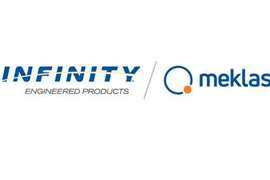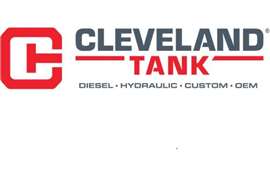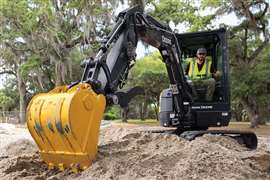Steady At Sea, Says MAN VP
13 June 2016

BY BO SVENSSON
Diesel & Gas Turbine Worldwide interviewed Ole Grøne, senior vice president of Two Stroke Engine Sales and Promotion, MAN Diesel & Turbo, to get his and his company’s views on the current challenges and opportunities of the world market.
Diesel & Gas Turbine Worldwide: How do you see the development of ship building over the next decade?
Grøne: Within the field of interest for two-stroke, low-speed engines, we expect a stable, but modest growth for a foreseeable future, say a decade. Although presently with some overcapacity, containerization will grow, but surprisingly also bulk shipping will grow again, when it picks up again. We do not expect big differences between the segments, and shipbuilding will stay in Korea, China and Japan.
New, large building areas are not expected.
WW: Do you see any major changes in who owns and operates various ship types? Will we see even larger operators of fleets than today, or could there be an increase of smaller operators and fleets?
Grøne: It will probably be different depending on the area and segment. Consolidation is already taking place in container shipping, and could be followed by the bulk and tanker owners. We will see new owners coming up or reappearing for example in the Middle East and China. And some smaller specialized ship-owning companies will be active in “speciality” areas.
WW: How will legislation, current or in the future, impact shipping activities? Will the number of gas-driven vessels increase or will heavier fuels maintain their strong position?
Grøne: I believe legislation and regulation will be a decisive factor for technological development. We have seen NOx and SOx abatement technologies being developed and CO2 control via the (Energy-Efficiency Design Index) EEDI is now developing, which influence ship speed and installed power. When the global sulfur cap comes, this will in my view be a significant game changer, especially if at the same time CO2 and greenhouse gases (GHG) control will take over as the most important to fight global warming. This could sponsor a shift to low carbon fuels, such as natural gas, methanol and (liquefied petroleum gas) LPG.
Also, more efficient systems will be created with waste heat recovery systems installed, better engine management systems for better efficiency, etc. Heavy fuel will not go away, but will stay dominant. The sulfur level will go down. There will be more SOx scrubbers out there, but there will be ways to remove the sulfur before the fuel is sold, eventually.
WW: Will the technology developed for two-stroke engines over the last several years meet the future requirements of the market and regulations, or will ship propulsion technology continue to change? And what areas do you see most likely to be focused on then?
Grøne: The development of and around two-stroke engines will be continued with focus on reducing the GHG impact. Digitalization will be developed further for operational performance optimization.
WW: How do you judge the impact of current low oil price on the market for newbuilding and consequently on the engine market?
Grøne: The market for newbuildings, and thereby engine building, seems not much effected by the oil price as the need for transport, and thereby the rates has gone down also. I believe this is all temporary, because all analysts points to a continued increase in world trade, and that is what is driving the need for ships. However the market is not stable, but in shipping it comes in waves. Hence we have bear and bull periods, but over time it evens out.
WW: What do you think about today’s rather unstable political situation in many parts of the world? A possible effect on your company’s operation?
Grøne: Apart from the present temporary low general activity level un-stability in certain areas can of course effect business, but overall we do not see much effect.
POWER SOURCING GUIDE
The trusted reference and buyer’s guide for 83 years
The original “desktop search engine,” guiding nearly 10,000 users in more than 90 countries it is the primary reference for specifications and details on all the components that go into engine systems.
Visit Now
STAY CONNECTED




Receive the information you need when you need it through our world-leading magazines, newsletters and daily briefings.
CONNECT WITH THE TEAM












